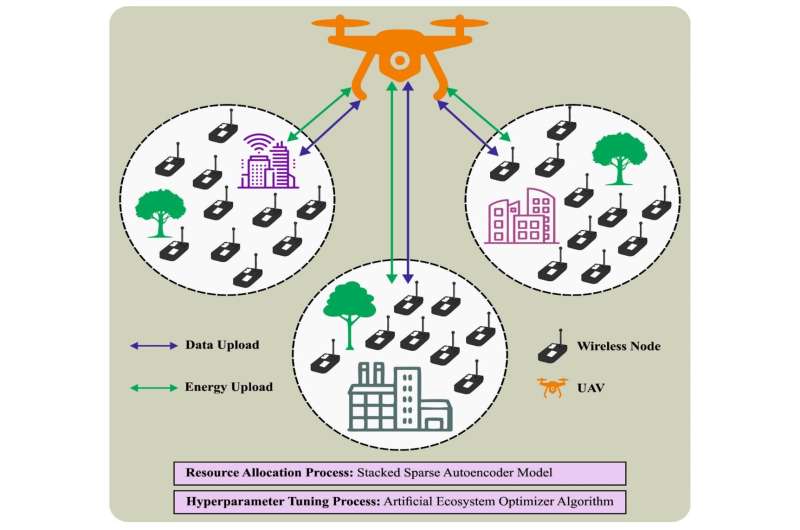
Future generation networks must provide high transmission speeds and flexible coverage. One way to do this is through networks of unmanned aerial vehicles, or drones. They operate in the millimeter wave range. But the use of a wide range of antennas and higher losses during signal propagation are disadvantages. All this requires energy, and drone batteries have limited capacity.
Therefore, new approaches are needed to optimize energy consumption in such networks. An RUDN mathematician and colleagues from Egypt, China, Saudi Arabia and Uzbekistan have created an artificial neural network for this purpose. Their research is published in the journal Drones.
"A network built using drones expands network capacity and coverage. In addition, drones are used as mobile charging stations to supply power to low-power gadgets. Since batteries on drones are typically limited in capacity, it is important to make tradeoffs between coverage area and energy use, as well as maintenance time. To improve coverage and energy efficiency, it is important to allocate resources, namely subchannels, transmission power, and user services," said Ammar Muthanna, Ph.D., Director of the Scientific Center for Modeling Wireless 5G Networks at RUDN University.
Mathematicians have developed an optimization system IRA-AEODL (intelligent resource allocation using an artificial ecosystem optimizer with deep learning). It distributes resources in a wireless network to drones. For this purpose, a special type of architecture is used—a composite offloaded encoder. The main principle of its operation is to obtain a response at the output layer that is closest to the output one. The so-called artificial ecosystem optimizer is the selection of neural network parameters.
IRA-AEODL has significantly improved the performance of other known systems. Average network throughput with a fixed number of users for a system of 2–6 drones increased by 3%–17%. And depending on the number of users—up to 30%. In addition, the new system uses more mathematically stable approaches.
"Our network resource allocation technique has improved performance. Compared to other approaches, our algorithm is more stable from a mathematical point of view. The model can quickly find the optimal solution to the problem," Ammar Muthanna, Ph.D., Director of the Scientific Center for Modeling Wireless 5G Networks at RUDN University said.
More information: Ahsan Rafiq et al, Intelligent Resource Allocation Using an Artificial Ecosystem Optimizer with Deep Learning on UAV Networks, Drones (2023). DOI: 10.3390/drones7100619
Citation: Researchers create artificial neural network for drones to optimize energy consumption (2024, January 16) retrieved 16 January 2024 from https://techxplore.com/news/2024-01-artificial-neural-network-drones-optimize.html
This document is subject to copyright. Apart from any fair dealing for the purpose of private study or research, no part may be reproduced without the written permission. The content is provided for information purposes only.
